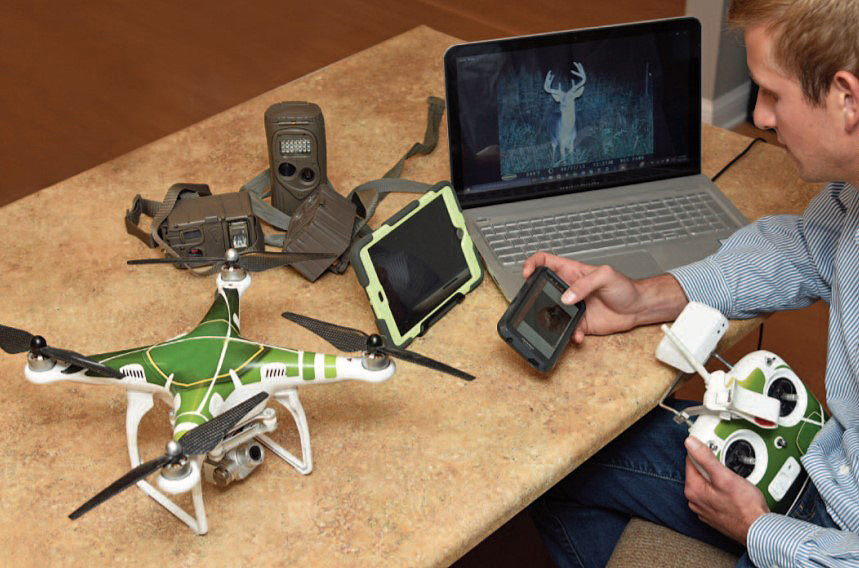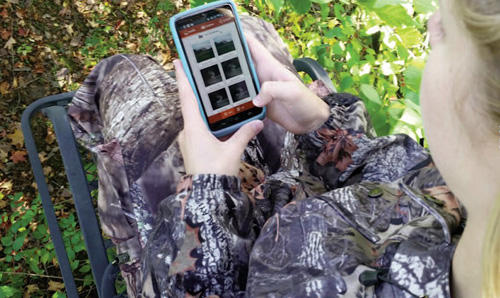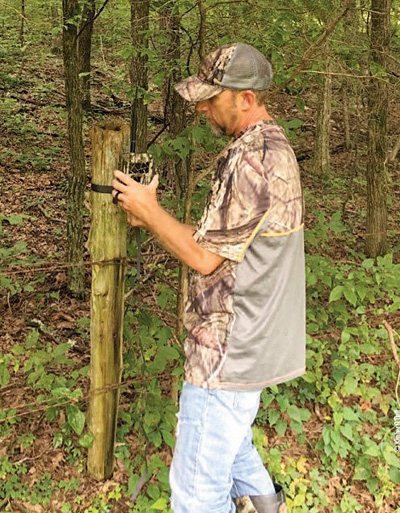Wes Delks | Originally published in GameKeepers: Farming for Wildlife Magazine. To subscribe, click here.

A CEO decides to go deer hunting instead of heading to work. It was 5 a.m. on a cold, early January morning. Scott, a CEO of a small thriving company got up to check his work emails. His phone vibrates and he gets a picture from one of his wireless trail cameras. It’s “Buster!” This buck is a giant non-typical and it was coming into his automatic feeder.
Scott had thought Buster had been shot during the November firearms season but apparently the 190” monster had slipped past the orange army for the 6th year in a row. Scott slipped off his necktie and opened up the ozone bag that contained his hunting clothing. He grabbed his high-powered rifle and backpack full of all his hunting gadgets. After a short ride on his Polaris he was within 300 yards of the automatic feeder where Buster had been photographed. Scott checked his phone again and sure enough a different wireless trail camera showed Buster heading east down a heavily used trail through some CRP. The buck was heading away from Scott’s 5-acre soybean plot into the heart of a sanctuary.
The hunter made a dash to the top of a hill. It was still pitch black so the tech savvy hunter pulled out his thermal imaging spotting scope and located the deer a few hundred yards away. Scott crossed a shallow ravine and knew he was between Buster and the sanctuary. The wind was blowing directly to where the buck should be coming from, but Scott quickly set up his Ozonics unit to reduce the possibility of being winded. The soft rustling of the leaves made it difficult to pick up the crunching of footsteps so he adorns his electronic sound amplification earmuffs. He can hear the crunching of footsteps and they are getting closer!
At the first glimmer of legal-light Scott’s rangefinder located Buster at 247 yards. Quickly, the hunter crunches the yardage into an app and finds out he needs to aim 8 ½ inches high. He softly squeezes the trigger and the monarch drops in his tracks.

the best action or perhaps where you see a buck you’re after, while it may
be legal in some states, many gamekeepers feel would not be ethical.
How far is too far?
Would you have done everything that Scott did on that January morning if you had the means to? Are there any pieces of equipment a game manager should not use that would give us an unfair advantage pursuing our quarry?
As technology advances in the hunting industry hunters are given opportunities to do things that make hunting much, much easier. But just because it is easier doesn’t mean we should do it. I’m not bashing any particular product because I know they all have a purpose and all can be effective in different situations. Most feel that our laws should dictate the legality of whether certain technology can be used. After all, if it makes us more lethal and proficient at harvesting our quarry we should welcome it, right? When will we have gone too far?
I personally own a wireless trail camera. However, I will not use the pictures that get sent to my phone to make any immediate, real-time change to my hunting decision. If I am hunting the north side of a creek and get a picture of the buck I am going after a half mile away on the opposite side, I will not get out of my stand and make a mad dash to his location. To me, that is not hunting. That is not the essence of our sport.
In the last issue of GameKeepers there was an article about using drones or UAVs (Unmanned Aerial Vehicles) for wildlife management and hunting. They are great tools for education and numerous management applications, but what about using drones for scouting or driving deer? What about using a fleet of robotic decoys that emit sound and scent? What about darting a GPS tracker into a buck in velvet during the summer and use it to find him in the fall? These are all concepts that may become relevant in the next few years and we need to decide where do we draw the line?
Most people feel when it comes to managing wildlife we should employ any and all technology to make us more proficient and the job easier. They have no problem with gamekeepers using cameras, drones, night-vision, remote controls or any gadgets that improve the craft. However, when it comes to using those same tools for hunting, most draw the line.
It should be noted; however, that most felt “the more technology the better” when it comes to hunting “nongame” species like invasive wild hogs. Rod Pinkston of Jager Pro, one of the country’s leading authorities on wild hog removal, uses remote control cameras, remote triggering devices for his traps, FLIR infrared cameras and rifle scopes and everything available to his advantage to help remove these destructive creatures.

area and are looked up to. We must guard against raising a
generation of “stupid hunters.” Many young hunters rely
solely upon technology and neglect to learn to read sign,
gather woodsmanship skills, or study their quarry.
In the past there have been arguments in the hunting community - like the one between traditional archers on one side and bowhunters who welcome new technologies on the other. As hunters, we should never fight amongst ourselves. Rather, we should calmly discuss opposing points and then laws should be made or adjusted through the systems we have in place.
In 2005 “internet hunting” was developed when Live-Shot.com was created by John Lockwood. Customers could aim and shoot a firearm using online webcams. Immediately there was an overwhelming response and by 2008 forty states had enacted laws banning “internet hunting.” To me, this was clearly crossing the line of what is ethical and respectful to the animal, but what about when the line is not so clear?
Sometimes that line is created by government or state wildlife agencies. But even if something is legal, it doesn’t make it ethical. What is ethical may be different to each individual. If it is legal, but you feel it’s not ethical, as gamekeepers we must lead by example.
Technological advances are not bad. Lots of these advances help us to harvest game more efficiently. For example, since I have started using lighted nocks I have found it much easier to determine if my shot placement was good. As technology improves in hunting we become more proficient hunters.
Technology also helps us to be better land and wildlife managers. There are products that give us the capability of activating pieces of equipment from our smart phones. This can be very useful for things like watering a food plot, turning on an electric fence, springing a trap on an entire sounder of wild hogs, or changing the water level on a duck hole without leaving your home. Time on a tractor mowing food plots or spraying herbicide can now be replaced by unmanned autonomous mowers or crop spraying drones. Wireless cameras can instantaneously alert us to a trespasser entering our property or a trap getting set off and another predator caught.
The advances in monitoring our property are incredible. With improvements in today’s trail cameras, knowing exactly which animals are on our property and patterning them is much easier. Programs such as DeerLab and HuntForce can even help us find patterns like which wind direction a particular buck favors to show up to a specific food plot.

Mother Nature’s camouflage. Brush, clutter or even the
dark of night are no match for the FLIR technology.
Is having too many trail cameras taking away the aspect of fair chase out of hunting? If someone had one wireless trail camera up in a 60-acre wood lot I would see no problem with that. But, what if they have fifteen or twenty and are stalking the woods waiting for the next picture of a buck to be sent to their phone and their intent is to act on it? Would ten cameras be ok? Would five?
I believe that all of these hunting gadgets have taken away the need for hunters to hone their woodsmanship skills. Young hunters are set on buying the next product that will make them successful instead of learning to read tracks and sign. If there are two hunters and one has all the new technology, but the other is a seasoned woodsman with a well-developed hunter’s savvy – my money is on the veteran hunter.
There are lots of different ways big buck hunters can be successful. The guy that intensively manages 20 acres on an urban east coast property and the guy that spot and stalks a 10,000 acre ranch in Oklahoma have the same end goal in mind. Using all this technology may just be another method to get the goal accomplished, but I believe too much technology can cross ethical boundaries and take the joy from matching wits with our quarry.
I fully support new inventions and improvements in our hunting products that make us better hunters and particularly those that make us superior land managers. But, please take a moment before you purchase your next hunting gadget and consider where you will draw the line.































